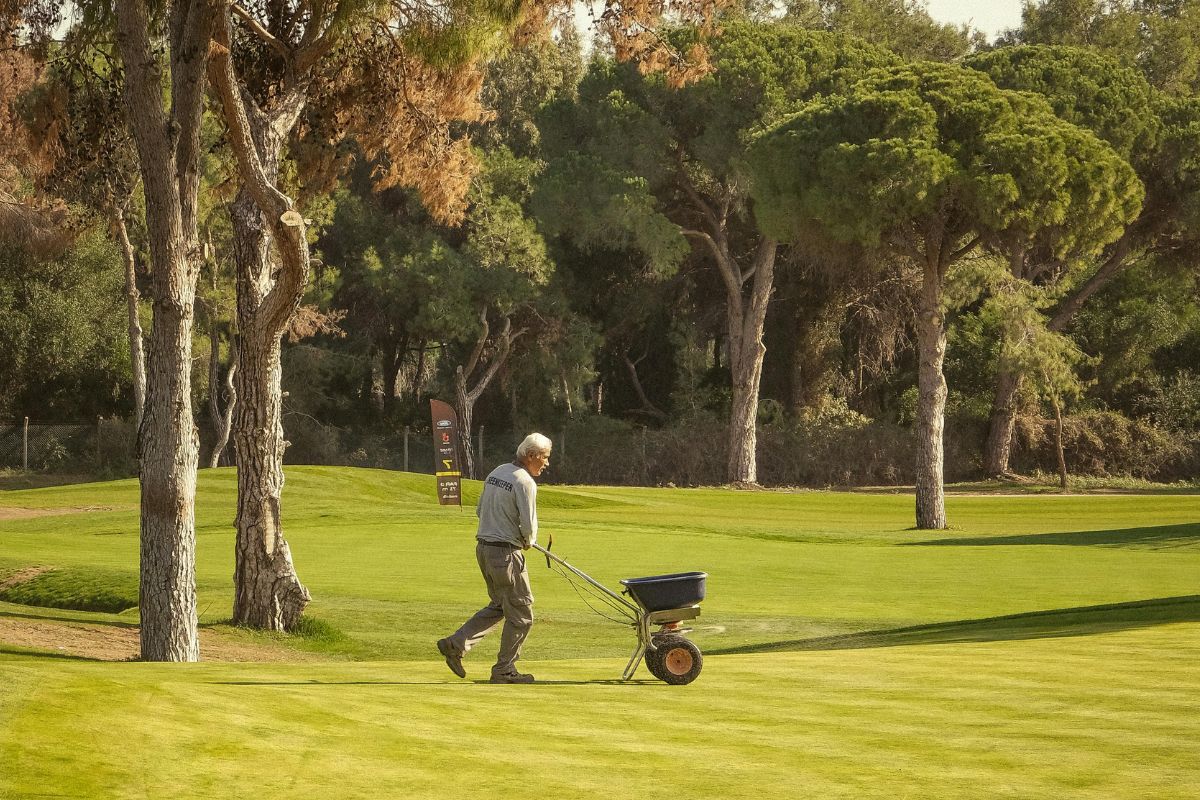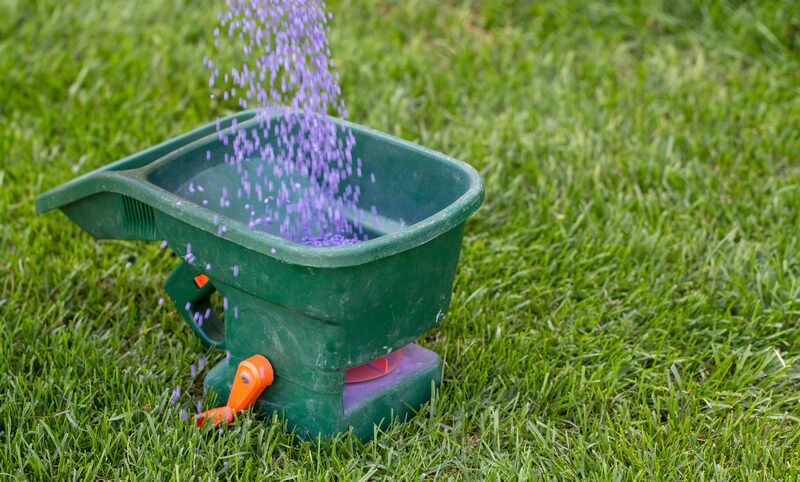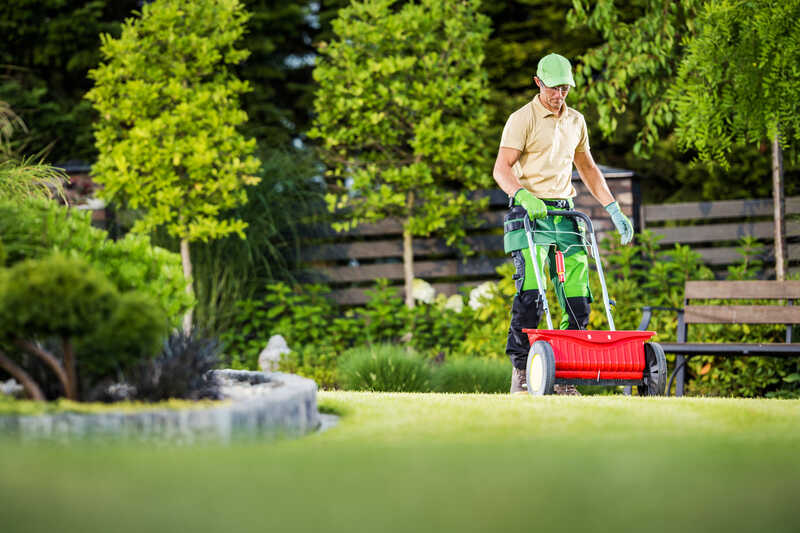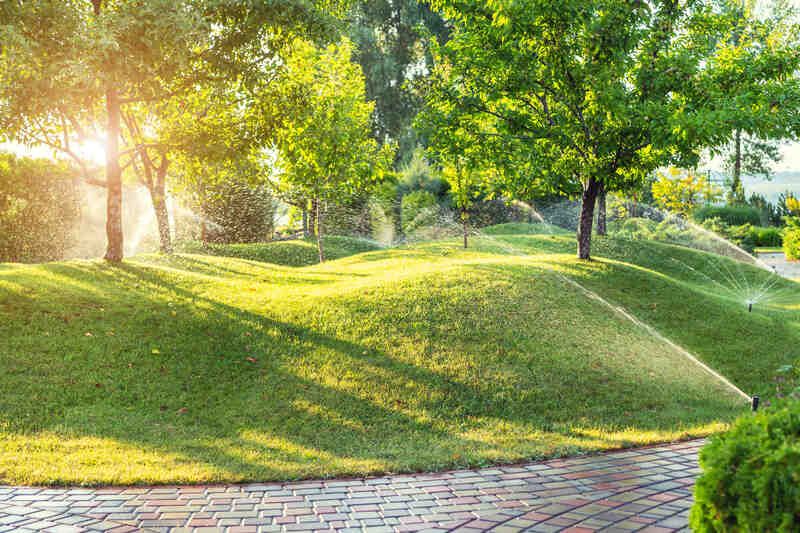
When the time comes to choose the right lawn spreader, consider your lawn size, the type of product you’re applying, and how much control you need over distribution. The correct choice ensures even coverage and healthy growth.
Broadcast and drop spreaders each offer unique advantages. Broadcast spreaders cover large areas quickly, while drop spreaders provide precision for small spaces and edges. Understanding these differences helps you avoid waste and uneven application.
In this guide, I’ll share my insight on selecting the ideal spreader for your needs. I’ll also explore key factors, maintenance tips, and types of lawn spreaders to help you make an informed decision.
Types of Lawn Spreaders
It’s essential to choose the right lawn spreader so it can evenly distribute fertilizer, grass seed, and other lawn care products. Whether you maintain a small yard or care for expansive acreage, there’s a spreader designed to meet your needs. Below, I’ve outlined the most common types of lawn spreaders according to price.
Hand-Held Spreaders

- Description: Small, portable units that typically hold 1 to 5 pounds of material.
- Best For: Tiny lawns or spot treatment
- Precision: Low. Can be inconsistent due to manual operation.
- Ease of Use: High
- Estimated Cost: The most affordable option at $10 to $30.
Broadcast/Rotary Spreaders

- Description: Uses a rotating disk to throw material in a fan pattern to cover large areas quickly. This is the most popular type.
- Best for: Medium to large lawns
- Precision: Moderate, covers large areas quickly but can be less precise near edges and walkways.
- Ease of Use: Moderate to high. Requires steady walking speed for even coverage but is easy to push.
- Estimated Cost: Manual versions cost $30 to $100, while professional-grade models run $200 to $400.
Drop Spreaders
- Description: Drops material in a precise strip directly below the unit, offering excellent accuracy near gardens and walkways.
- Best For: Small to medium lawns
- Precision: High
- Ease of Use: Moderate. Requires careful alignment with previous passes for full coverage.
- Estimated Cost: Typically costs $40 to $150, with commercial models reaching $300.
Tow-Behind Spreaders
- Description: Large-capacity units that attach to riding mowers or tractors.
- Best For: Properties over 1 acre
- Precision: Moderate, covers large areas efficiently but may distribute unevenly on rough terrain.
- Ease of Use: Low to moderate. Requires a compatible lawn tractor or ATV and proper speed control.
- Estimated Cost: Ranges from $150 to $500 depending on size and features.
Factors to Consider When Choosing a Lawn Spreader
Find Your Perfect Lawn Spreader
When the time comes to choose the right lawn spreader, consider your lawn size, terrain, and the type of product you’re applying. If you have a big yard, you’ll want a spreader that holds more so you won’t constantly refill it. For smaller or tricky spaces, something with better precision will help you avoid waste. If your lawn is hilly or uneven, stability and control are key to getting an even spread.
You should also consider what you’ll be spreading — fertilizer, grass seed, or pest control products all have different application needs. A spreader with adjustable settings makes it easier to get the right coverage without overdoing it.
Taking these factors into account will help you choose a spreader that makes lawn care easier and keeps your grass looking great.
Type of Material
While they’re generally known as fertilizer spreaders, these tools can also lay down grass seeds, pelleted lime, top-dressing materials like compost, and pre-and post-emergent herbicides. You can use any spreader for these tasks, but certain types work better for specific applications.
For example, broadcast spreaders are ideal for evenly distributing granular fertilizers. But if you’re using grass seed, a drop spreader is generally the best option. Grass seed is so light that getting a uniform spread with a rotary model can be tough.
Drop spreaders are also best for applying pelleted lime or herbicides. Broadcast and tow-behind spreaders can cover a lot of ground quickly, but you must be careful not to overspray. A drop spreader gives you more control, so you can spread materials without drifting onto plants or areas you want to avoid.
Hand-held spreaders work decently for all types of materials, as long as the area you want to cover is small.
Learn more about caring for your lawn:
- How to Fertilize Your Lawn
- How to Apply Pre-Emergent Herbicides
- How to Apply Post-Emergent Herbicides
- How to Plant Grass Seed
- How to Overseed a Lawn
- How to Lime a Lawn
- How to Topdress a Lawn
Lawn Size
The size of your yard determines the spreader you need. Using a broadcast or tow-behind spreader in a small yard can be cumbersome and may lead to over-fertilizing or seeding areas you don’t want to. Conversely, a small handheld spreader would take a long time to cover a large lawn, leaving you to spend most of your time refilling it.
Below, I’ve outlined which type of lawn spreader is best for your lawn size so you can avoid wasting your time and money.
| Lawn Size | Recommended Spreader Type |
| Small (under 1,500 square feet) | Handheld |
| Medium (1,500 to 5,000 square feet) | Drop, Broadcast |
| Large (over 5,000 square feet) | Broadcast, Tow Behind |
Read More: If you don’t know how to calculate your lawn’s square footage, check out our guide on How To Measure a Yard.
Landscape Layout
A handheld spreader is your best bet for getting around everything if you have a 1,500-square-foot lawn that’s all curvy with flowerbeds, trees, and winding paths. But if that same yard has mostly straight lines with just a few features, like a small patio and a fire pit, a drop spreader would do the job just fine.
I recommend using a mix of spreaders for an average-sized, rectangular lawn with a few tricky spots — narrow paths or corners around garden beds and decorative rocks. Start with a handheld spreader for those areas, then switch to a broadcast or drop spreader for the open sections.
For very large lawns that are wide and mostly clear of landscaping, a tow-behind spreader is ideal because it allows you to cover more ground efficiently.
Read More: How to Weed and Feed Your Lawn
Terrain of Your Area

Does your lawn have hills, bumps, or curves? Drop spreaders are the best choice for sloped or uneven ground. They are easier to push because the material falls straight down, ensuring a consistent application without bouncing around like it might with broadcast or tow-behind spreaders.
If you have a large yard with a lot of slope, you can use a broadcast model. Just remember to walk up and down the hill instead of across it when fertilizing. This helps you keep everything under control and achieve good coverage.
When overseeding, it doesn’t matter what type of spreader you use — crisscrossing the area is the way to go for even distribution.
Read More: How to Plant Grass Seed on a Slope
Hopper Capacity and Design
The hopper is essentially the tank of your spreader, which holds the seed, fertilizer, or other materials you’re applying to your lawn. I suggest spreaders with steel hoppers if you need durability, and plastic hoppers if you prefer a spreader that’s easier to maneuver and won’t rust.
The size of the hopper should match the size of your lawn to make your job easier and avoid frequent refills. Refer to the table below to find the right hopper capacity for your lawn size.
| Lawn Size | Recommended Hopper Capacity |
| Small (under 1,500 square feet) | 10 to 20 pounds |
| Medium (1,500 to 5,000 square feet) | 20 to 40 pounds |
| Large (over 5,000 square feet) | 50 pounds or more |
Precision and Ease of Use
When it comes to precision, I recommend drop spreaders because they release material directly beneath the hopper in a controlled, straight-line pattern. Unlike broadcast spreaders, which scatter granules over a wide area, drop spreaders only apply product where the wheels travel, preventing overlap or unintended spread onto sidewalks, driveways, or garden beds.
In addition, make sure to choose a spreader with easy-to-use settings and calibration controls. This allows you to fine-tune the application rate to match the specific product you’re using and avoid over-applying or under-applying.
Here are a few other things to keep in mind when choosing a lawn spreader:
- Make sure your spreader has spill guards to prevent the product from accidentally spilling out.
- Go for spreaders with ergonomic handles and controls that are comfortable to use. This can save your hands and wrists from a lot of strain, especially if you have a big yard to cover.
- Look for features that make it easy to handle, like wide, treaded tires for better grip on uneven ground. Some spreaders even have folding handles for compact storage in your garage or shed.
FAQ About Lawn Spreaders
To determine the correct spreader setting for your lawn care product, follow these steps:
● Check the product label: Most fertilizer, seed, and pesticide bags include recommended spreader settings for various models. Look for your specific spreader brand and model on the packaging.
● Refer to the spreader manual: If the product doesn’t list your spreader, check your spreader’s user manual or the manufacturer’s website for a general guideline based on granule size and application rate.
● Use online resources: Some manufacturers provide online calculators or guides to help you determine the right setting based on your spreader and the product being applied.
● Adjust based on lawn conditions: Factors like walking speed, overlap, and spreader wear can affect application. Make small adjustments if you notice over- or under-application.
When in doubt, it’s best to start with a lower setting and make multiple passes rather than applying too much product at once.
Read More: Can You Over-Fertilize Your Lawn?
To keep your lawn spreader running smoothly year after year, it requires proper maintenance. Follow these simple tips to keep it in working order:
● Clean it after each use: Rinse the hopper and spreader mechanism with water.
● Inspect it for damage: Check for worn-out parts, like cracked wheels or loose levers, and replace them if necessary.
● Store it properly: Keep your spreader in a dry, protected place when not in use.
This is crucial since incorrect calibration can lead to uneven application, wasted material, or lawn damage. While the calibration process can vary by model, here’s a general idea:
1. Check your product label for recommended spreader settings.
2, Measure a 100-square-foot test area.
3, Calculate how much product you need for that test area based on the coverage rate listed on the package.
4, Put that exact amount in your spreader.
5. Set your spreader to the recommended setting.
6. Walk at a steady pace and spread the product over your test area.
7. Check your results:
–If you run out before finishing, the setting is too high.
–If you have leftover product, the setting is too low.
8. Adjust the setting and repeat until you use the exact amount of product.
9. Write down the correct setting for future use with that product.
Find a Lawn Care Pro Near You
An even distribution of fertilizer, seed, or pesticide is essential for a beautiful yard. However, if your grass is not cut properly or your edges appear messy, the overall effect may not be as striking. A lawn care expert will evaluate your lawn and take care of all the hard work, from fertilization to mowing.
Why worry about the details when you can have an expert handle everything? LawnStarter can connect you with a local lawn care professional to ensure a beautiful, lush lawn.
Main Photo Credit: Pexels